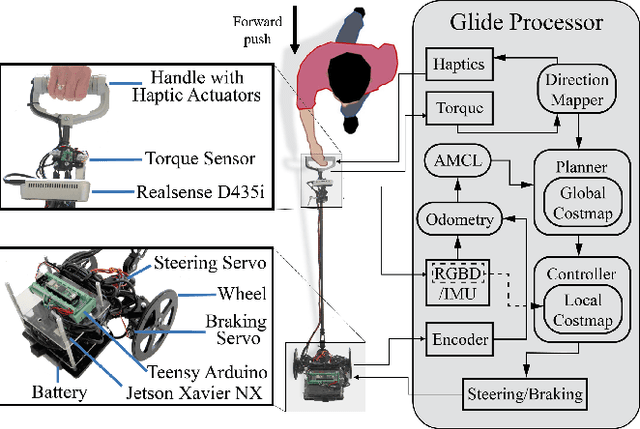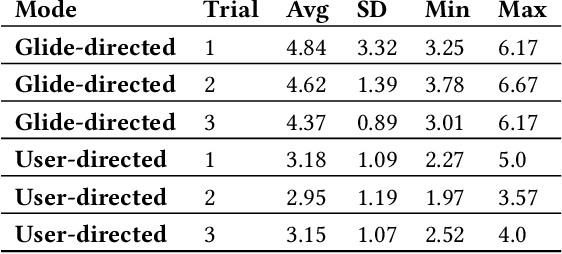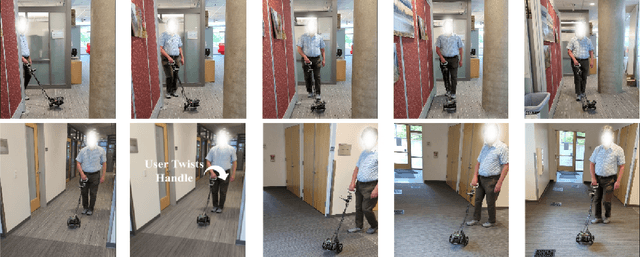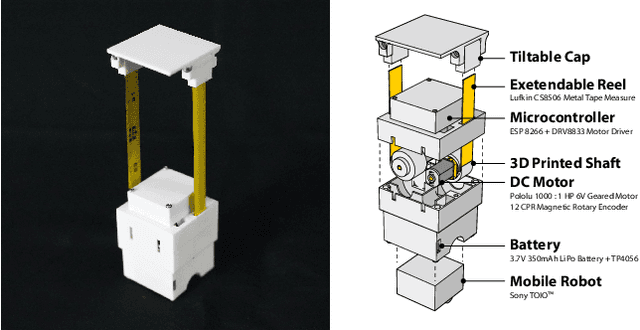Mike Sinclair
Exploring Levels of Control for a Navigation Assistant for Blind Travelers
Jan 05, 2023



Abstract:Only a small percentage of blind and low-vision people use traditional mobility aids such as a cane or a guide dog. Various assistive technologies have been proposed to address the limitations of traditional mobility aids. These devices often give either the user or the device majority of the control. In this work, we explore how varying levels of control affect the users' sense of agency, trust in the device, confidence, and successful navigation. We present Glide, a novel mobility aid with two modes for control: Glide-directed and User-directed. We employ Glide in a study (N=9) in which blind or low-vision participants used both modes to navigate through an indoor environment. Overall, participants found that Glide was easy to use and learn. Most participants trusted Glide despite its current limitations, and their confidence and performance increased as they continued to use Glide. Users' control mode preference varied in different situations; no single mode "won" in all situations.
HapticBots: Distributed Encountered-type Haptics for VR with Multiple Shape-changing Mobile Robots
Aug 24, 2021



Abstract:HapticBots introduces a novel encountered-type haptic approach for Virtual Reality (VR) based on multiple tabletop-size shape-changing robots. These robots move on a tabletop and change their height and orientation to haptically render various surfaces and objects on-demand. Compared to previous encountered-type haptic approaches like shape displays or robotic arms, our proposed approach has an advantage in deployability, scalability, and generalizability -- these robots can be easily deployed due to their compact form factor. They can support multiple concurrent touch points in a large area thanks to the distributed nature of the robots. We propose and evaluate a novel set of interactions enabled by these robots which include: 1) rendering haptics for VR objects by providing just-in-time touch-points on the user's hand, 2) simulating continuous surfaces with the concurrent height and position change, and 3) enabling the user to pick up and move VR objects through graspable proxy objects. Finally, we demonstrate HapticBots with various applications, including remote collaboration, education and training, design and 3D modeling, and gaming and entertainment.
 Add to Chrome
Add to Chrome Add to Firefox
Add to Firefox Add to Edge
Add to Edge